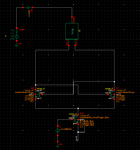W_ww
Newbie
Hello,
I am trying to do S parameter analysis for cross coupled LC oscillator. The first step is to analysis cross-pairs.
I want to get the gm and C. However, I have no idea that how to set up the test schematic, since for this, there is no input.
How can I set two ports?
Hope somebody can help me. Thanks in advance.
Best regards,
Wang
I am trying to do S parameter analysis for cross coupled LC oscillator. The first step is to analysis cross-pairs.
I want to get the gm and C. However, I have no idea that how to set up the test schematic, since for this, there is no input.
How can I set two ports?
Hope somebody can help me. Thanks in advance.
Best regards,
Wang
